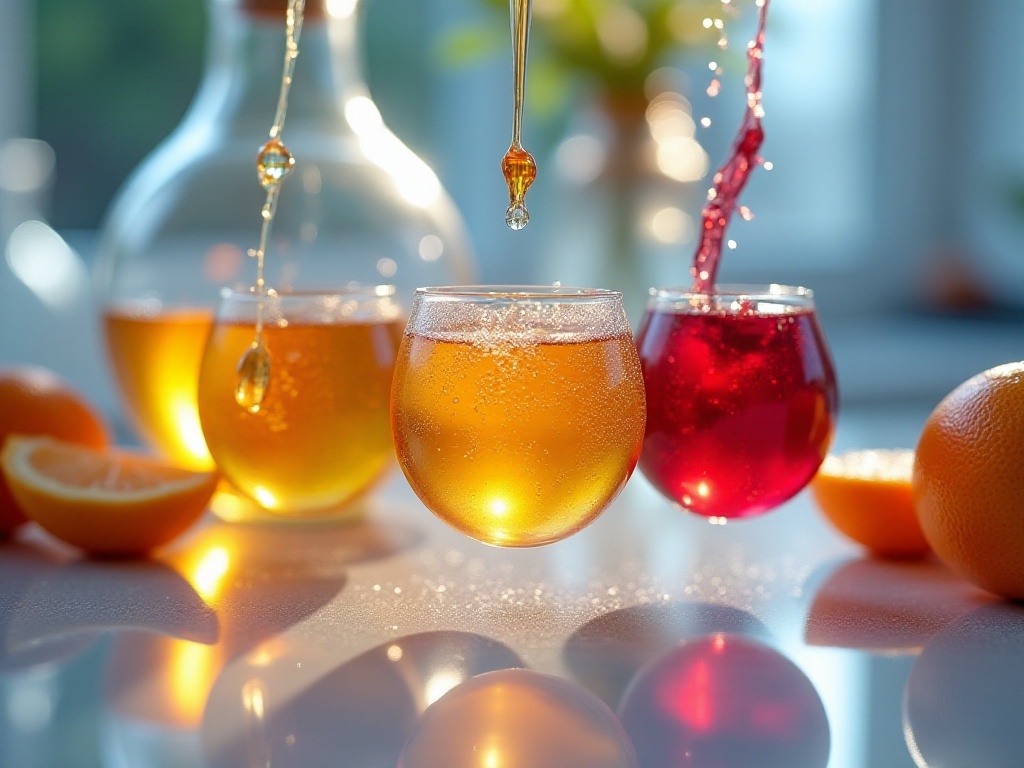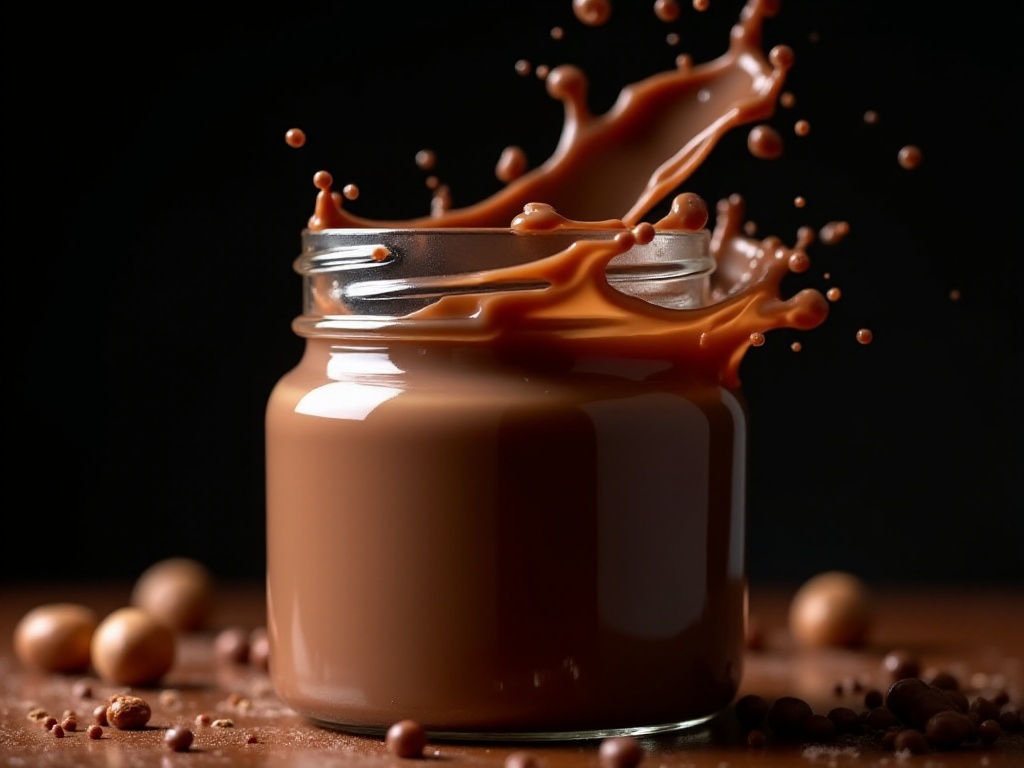Introduction
Hello everyone, today I want to share a very practical topic - the ultimate guide to making drinks at home. As an experienced enthusiast who has been obsessed with drink-making since college, I can say with certainty that making the perfect drink isn't as simple as it seems. But don't worry - through my years of research and practice, I've found that you can make drinks at home that rival professional bars if you master the right methods and tricks.
Cooling Tips
When it comes to making drinks at home, temperature control might be the most challenging part. Have you often encountered this frustration: ice cubes dilute the drink's taste, but without ice it's not cold enough? Actually, this problem is easy to solve. My favorite method is using frozen grapes instead of traditional ice cubes. I remember once when I hosted a party at home, this trick impressed all my friends. The specific method is to wash fresh grapes and freeze them - they not only keep your drinks cold but won't dilute the taste like regular ice cubes. Plus, after you finish your drink, these frozen grapes can serve as tasty snacks. I usually prepare both red and green grapes, so different colored grapes paired with different drinks look particularly appealing.
Speaking of ice cubes, I want to elaborate on this. Many people might think ice is just ice, that you can freeze it any way, but that's not the case. Different drinks are best paired with different types of ice, which is especially important in professional bartending. For instance, spirits like whiskey are best paired with large square ice cubes because they melt slowly, allowing you to slowly taste the changing flavors of the liquor. I bought special ice molds at home to make completely transparent large ice cubes, which are not only practical but look very sophisticated. For cocktails like mojitos and margaritas, crushed ice is more suitable because they need rapid cooling and moderate dilution. At home, you can use an ice crusher or simply crush regular ice cubes in a blender to make crushed ice.
Besides regular ice cubes, I also like to use some creative ice cubes to garnish drinks. For example, you can put mint leaves, blueberries, or edible flowers in ice cube trays, creating ice cubes that not only keep drinks cold but slowly release additional flavors as they melt. I recently tried making ice cubes with coconut water, which pairs perfectly with tropical drinks.
If you want to keep drinks cold longer, try the "double cup method." This involves first chilling the cup you'll use in the refrigerator, then when pouring the drink, placing it inside a larger cup filled with crushed ice between them. This way your drink can stay cold longer. I often use this trick when entertaining guests at home, and it always draws admiration.

Creative Recipes
Did you know? Many ingredients at home can be repurposed to make delicious drinks. I especially like to try creative experiments on weekends. For instance, don't rush to throw away empty jam or peanut butter jars. Pour some milk into the jar, put the lid on and shake vigorously, and you can make a delicious milkshake. Last week I used this method with an almost empty chocolate sauce jar, added some vanilla ice cream and banana, and it was absolutely amazing - my roommate begged me for it three days in a row.
Speaking of creative recipes, I've recently become obsessed with making fruit tea. Not the kind where you just steep fruit slices, but rather chopping fresh fruit and slowly simmering it in a slow cooker, then adding dried flowers and spices. For example, apple with cinnamon, pear with ginger, lemon with mint - each combination creates different sparks. The brewed fruit tea can be enjoyed hot or chilled and mixed with sparkling water for a special fizzy drink.
I also particularly enjoy researching some healthy drinks. Recently I discovered a particularly tasty recipe: take a small piece of ginger, two lemon slices, a spoon of honey, and mix with warm water. This drink not only warms the stomach but is especially invigorating. If you find the ginger taste too strong, you can add some citrus peel to balance it. I often have a cup when staying up late to finish assignments - it works much better than coffee.
Professional Production
When it comes to professional drink making, first you need to be clear about what kind of drink you want. Do you want an energizing coffee, a health-conscious herbal tea, or a thirst-quenching juice? Different purposes determine different production methods. This is particularly important because many people fail to prepare suitable equipment and ingredients due to unclear goals from the start.
If you want to make coffee, I recommend investing in a good coffee machine. I use a semi-automatic coffee machine, which requires some skill to operate but allows me complete control over the extraction process. A grinder is also essential, as freshly ground coffee beans maintain the best flavor. I usually keep several different origin coffee beans on hand - like Ethiopian Yirgacheffe which is particularly suitable for pour-over coffee, with its unique floral and fruit aromas that are captivating.
If you prefer herbal tea, then you need to pay attention to tea set selection and brewing methods. I personally recommend glass tea sets because you can appreciate the beautiful process of the flowers blooming. When brewing herbal tea, temperature control is important. For example, jasmine tea is best with 85-degree water, which can fully extract the floral aroma without destroying the tea leaves' nutrients.
For juice production, I strongly recommend getting a high-speed juicer. Regular juicers don't have enough speed and easily cause pulp separation. High-speed juicers not only make smoother juice but also maximally preserve the fruits' nutrients. I often use it to make mixed juices, like apple-carrot juice or pineapple-mango juice - when properly combined, they're not only delicious but also very healthy.
Sweetness Control
Controlling sweetness when mixing drinks is a real art. This might be the easiest aspect to go wrong, as everyone has different tolerance for sweetness. There are many types of sweeteners available now, from traditional white sugar and honey to new artificial sweeteners and stevia. Based on my experience, honey is particularly suitable for warm drinks and can add some unique aromas. I usually keep several different flavored honeys on hand - like acacia honey which suits delicate flower teas, while date honey is better for strong black tea.
When using syrups, I suggest making some flavored syrups yourself. Like vanilla syrup, cinnamon syrup, etc., this way you can add special flavors while adjusting sweetness. Making syrup is also very simple - just boil equal parts sugar and water, then add desired spices to steep. My favorite is rosemary syrup, which pairs perfectly with lemonade.
For drinks requiring precise sweetness control, I use measuring cups to ensure consistent amounts each time. For example, when making lemonade, my recipe is: 30ml syrup, 60ml fresh lemon juice, 200ml pure water - this ratio is neither too sweet nor too sour. Of course, this recipe can be adjusted according to personal preference.

Acidity Adjustment
To create drinks with rich layers, adjusting acidity is also important. Lemon juice is the most common acid adjuster, but there are actually many choices. I've recently been particularly fond of lime juice - it's more refreshing than regular lemon and has a more intense aroma. When making mojitos, I always choose lime because it gives the drink more distinct layers of taste.
Besides citrus fruits, I also like using some special acid adjusters. For example, green plum sauce not only provides sourness but adds a special fruit aroma. I recently discovered that a little green plum sauce can add many layers to a drink. Sometimes I also use apple cider vinegar to adjust acidity, which brings a special freshness.
When adjusting acidity, note that different acid adjusters bring different flavors. Like lemon's sourness is more direct, while green plum's sourness is more subtle. Choosing which acid adjuster depends on the style of drink you want to make. I usually keep multiple acid adjusters on hand so I can mix and match as needed.
Business Perspective
If you want to open a beverage shop, you need to think about drink development from a business perspective. This part might be especially useful for friends interested in entrepreneurship. I previously interned at a chain coffee shop and learned a lot about beverage shop operations.

Menu Design
How should a good drink menu be designed? I've thought about this question for a long time. I suggest listing drinks separately, which not only looks more professional but allows customers to focus more on drink options. When designing the menu, you can categorize by drink type, such as coffee, tea drinks, juices, etc. Then subdivide each category into hot and cold drinks.
When describing drinks, use vivid and imaginative words. Instead of simply writing "lemon tea," you could write "Sunshine Lemon Tea: Selected Ceylon black tea paired with fresh lemon slices, a refreshing summer essential." Such descriptions help customers better understand the drink's characteristics.
Price display also requires careful consideration - I suggest not over-emphasizing price but focusing on describing the drink's special features. You can use different font sizes to distinguish important information, giving the menu more layers. I've seen some shops add drink photos to their menus, which is also a good idea, but make sure the photo quality is good, otherwise it might affect the overall impression.

Product Planning
When developing drink items, you need to fully consider target customer preferences. For example, if your shop is near office buildings, you need to prepare energizing coffee in the morning and refreshing cold drinks at noon. Weekend product combinations might need corresponding adjustments. I know a beverage shop owner who's very clever - he adjusts his product structure according to customer flow characteristics at different times.
When designing products, pay attention to seasonal changes. Summer can focus on refreshing drinks like various smoothies and sparkling water. Winter can launch warming drinks like ginger tea and hot chocolate. Also pay attention to ingredient seasonality - developing new products with seasonal fruits not only reduces costs but also provides better taste.
Cost control is also an important part of product planning. Calculate the cost of each drink, including raw materials, labor, utilities, etc. I suggest using a spreadsheet to record this data, which makes it easier to see the profit margin of each product. When pricing, consider both costs and market conditions to find a balance point.

Conclusion
After reading this article, do you have a new understanding of drink making? Actually, making drinks is as interesting as performing magic. I remember the first time I made fruit tea at home, watching the fruit slices slowly unfold and release their tempting aroma - that sense of achievement is really hard to describe. I believe that as long as you master these basic principles and techniques, you can quickly become a drink expert in your social circle.
Drink making is a craft that requires constant practice and innovation, and everyone can find their own unique recipes in this process. Just like now I can make the most suitable drinks for my friends based on their different taste preferences. This feeling of bringing joy to others with your own craftsmanship is really wonderful.
Have you tried making any special drinks recently? Or do you have any unique recipes to share? Actually, everyone might have their own secret formula, and maybe your creativity will become the next popular drink trend.
Related articles




